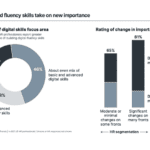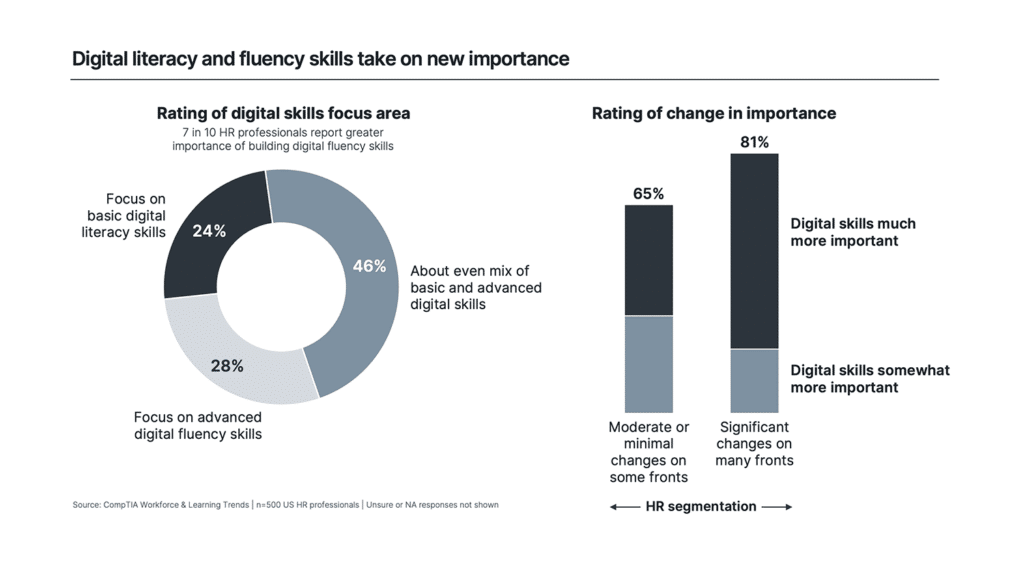HR leaders are having a hard time identifying future leaders who meet their company’s needs. From skill gaps making it difficult to replace retiring senior leaders to increasing global complexity making top positions that much more demanding, the task of identifying the “right” person for the job gets harder every year.
The pipeline of talent ready to step into key leadership positions is decreasing despite labor markets showing greater stability. Turnover rates are as high as ever, employees are feeling increasingly disengaged in their roles, jobs are taking longer to fill and productivity rates are sitting below years past.
While some of the solutions to these gaps will certainly lie in sourcing talent from the outside, companies should consider searching more aggressively from within their own ranks. Hidden talent frequently sits just beneath the surface, untapped and overlooked due to a lack of process, insight and exposure to accurately evaluate their capabilities.
Additionally, with political hesitation growing around programs targeted at increasing representation of marginalized groups, the potential for leaders from marginalized groups to be overlooked is growing once again.
While these challenges can be daunting, HR leaders are well-positioned to understand the most common mistakes that lead to overlooking potential leaders and the best approaches for unlocking them.
Put a finger down if …
You feel your current talent-management tools and processes are insufficient.
If your company doesn’t have robust approaches in place to track the progress and contributions of employees, you’re ultimately lacking foundational insights that could point you toward future leaders.

You’ve over-indexed on a select few and found yourself with too few options.
Is your attention too honed on the same few names that surface repeatedly and sit on too many succession plans? By fully dedicating your focus to a select few, you’re most likely blocking yourself from scanning broader and deeper for future talent.
You’ve seen personal preferences and biases shape critical leadership decisions.
We all have preferences and biases that shape our decision-making around talent. When left unaddressed or unmanaged, these leanings impact objectivity, advantage some leaders over others and can lead to a pipeline that fails to realize its full potential.
Data-driven discoveries

Finding the hidden talent within your organization requires a data-driven approach. Rather than relying on nominations by senior leaders, organizations are accessing broader and more diverse talent pools by casting a wider net and leveraging data to identify scalable talent. Organizations are improving the quantity and quality of their leadership pipelines by tapping into the broader employee population—not just those who get exposure to senior leaders.
Of course, companies also need a way to identify those who are more ready to scale and determine how to help them grow into more senior roles. Implementing a program to assess and track leadership scalability, career aspirations, qualifications and expertise enables companies to make better and more equitable decisions. And by focusing on the capabilities most critical to your business today and in the future, you’ll be able to navigate your pipelines with a guiding purpose to uncover talent that will fuel the company long-term.
Culture of belonging
In addition to leveraging objective data, ensuring your definitions of success and workplace culture facilitate growth, development and a pipeline that represents the widest definition of diversity is critical for delivering results. Is your company placing a high level of importance on creating a culture of belonging that enables performance and talent growth?
Contrary to historical ideas, belonging is not simply a sentiment but a pragmatic, systematic approach to creating a climate where talent thrives. When done well, organizations can address equity issues, create flexibility around how work gets done and minimize divisiveness and resistance to programs that support marginalized employees. It’s what ensures unconscious bias isn’t contributing to important decisions by way of cultural norms and expectations. By instilling a culture that fully leverages the performance and potential of all employees, you’ll know that no one is being overlooked—consciously or not. The foundations center on opportunities, access, safety, trust and advocacy within an organization.
Organizations can create belonging through:
Opportunities: Be clear about expectations, roles and responsibilities, and ensure employees understand how to be successful and develop in their roles.
Access: Provide tools, information and resources that enable individuals to fully participate, build relationships and influence their organization.
Safety: Fully leverage diversity in the business and create an environment where everyone can participate while maintaining a sense of boundaries.
Trust: Ensure there is alignment with purpose and culture, minimize favoritism and bias, and create leadership model values that allow for cultural fluency and humility.
Advocacy: Foster human-centric leadership models, demonstrate visible sponsorship and ensure accountability for creating belonging within the culture and in talent and performance systems.
Research demonstrates that organizations with a higher sense of belonging have higher degrees of engagement, commitment to the business, organizational trust and a willingness to perform at greater levels.
The post Identifying future leaders: How to unlock hidden and marginalized talent appeared first on HR Executive.


